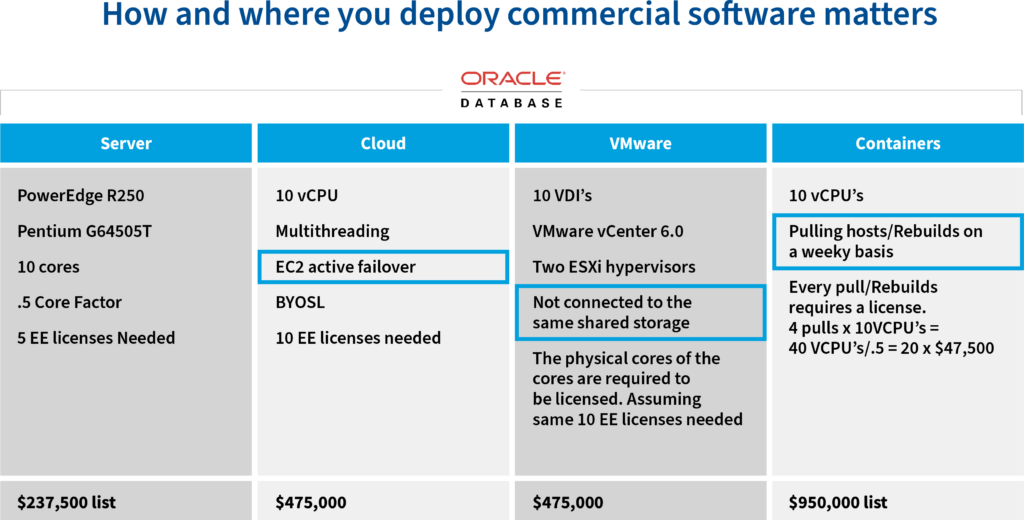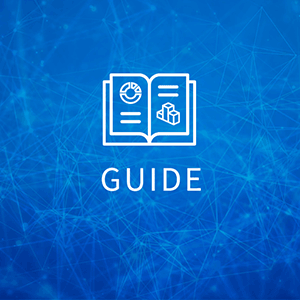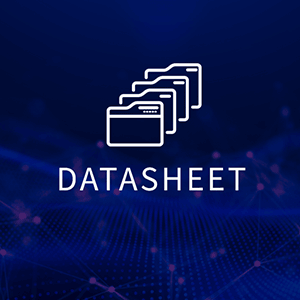The convergence of ITAM and FinOps (Hybrid ITAM and FinOps) has gained incredible traction in 2023. With Gartner predicting that “by 2025, 50% of organizations will unify SAM and FinOps into a consolidated discipline delivering portfolio cost management and governance,” it’s certainly a concept that many organizations are taking steps towards and understanding the value of this vital collaboration.
However, like many newer concepts, you may be hesitant to mix up the traditionally siloed approach between ITAM and FinOps teams. To understand what you could experience if you don’t address this fundamental change in processes, let’s look at a few potential outcomes.
Lack of total cost ownership (TCO) of the cloud
Without considering the essential piece of licensing and associated costs of commercial software running in the cloud, it’s nearly impossible to get an idea of the true cost of the application running on cloud resources. With teams siloed, a lack of data exchange can result in much greater costs and decreased visibility for both teams. For example, licensing costs that are associated with an application greatly outweigh the infrastructure they’re running on. In this Azure example, the SQL server cost is more than eight times the infrastructure.
Not only does this mean that the infrastructure adjustment opportunities FinOps is responsible for owning make up a small portion of spend, but these same activities can have profound impacts on use rights and licensing costs (the purview of ITAM teams) if the new instance doesn’t meet licensing requirements found on existing setups. This extends into marketplace decisions, where licenses are often readily available to fulfill requirements in large enterprises. However, it’s on your organization to identify and use these bring your own license (BYOL) opportunities, resulting in a significant amount of wasted, duplicate spend.

Insufficient visibility into deployment decisions
In addition to the tight relationship between FinOps activities and licensing implications, deployment of your commercial software has a significant impact on your overall application cost. In the example below, the blue boxes illustrate pricey configuration differences that contribute to greatly enhanced costs apart from standard rates that aren’t part of the strategy between siloed teams with separate data sets.

Leaving the door open to compliance and security vulnerabilities
A core portion of SAM activities that can greatly benefit FinOps is addressing end of support (EOS) and end of life (EOL) for your commercially licensed software. While SAM teams determine when software assets will be either out of their support window or have reached EOL, if those licenses running in cloud are unaddressed due to a lack of collaboration, those EOS/EOL software packages in the cloud will put your enterprise at great risk from both a compliance and security perspective. Without any visibility and exchange of data, the cost of the application can increase greatly when you take into consideration audit and remediation costs.
Cloud Management
Take control of cloud use with out-of-the-box and customized policies to automate cost governance, operations, security and compliance.
Missed opportunities to demonstrate business value
While previous examples show the direct financial and vulnerability risks that come from a lack of collaboration, this collaboration also represents a huge opportunity for ITAM/SAM practitioners and FinOps practitioners to easily demonstrate the direct value of their efforts to stakeholders and leadership. As seen above, when your FinOps practices can utilize the expertise and domain knowledge of ITAM teams, incredibly significant cost optimizations can be realized, and a dual approach to resources and software can see exponential results on application cost.
A broader, collaborative view
Hybrid ITAM and FinOps combines the existing core components of the classic FinOps framework and lifecycle and extends it to encompass additional cloud costs and compliance considerations that could result in additional costs that may have been previously overlooked. Flexera has long seen this future approaching, and we’ve built our Flexera One platform around these needs. A Hybrid ITAM and FinOps approach can be generally summarized as enabling true cost optimization of applications and workloads. With full visibility into the resources and lifecycle of an application that utilizes licensed software, you can make holistic decisions about that application, enabling optimization of costs that may otherwise be unchecked . The end result is the ability to see much greater results across teams in your organization.
Combining Flexera’s Cloud Cost Optimization, IT Asset Management and SaaS Management within the same platform, sharing the same data and control planes, you can extend your practices to include all costs associated with cloud. Learn more about this expanded view.







